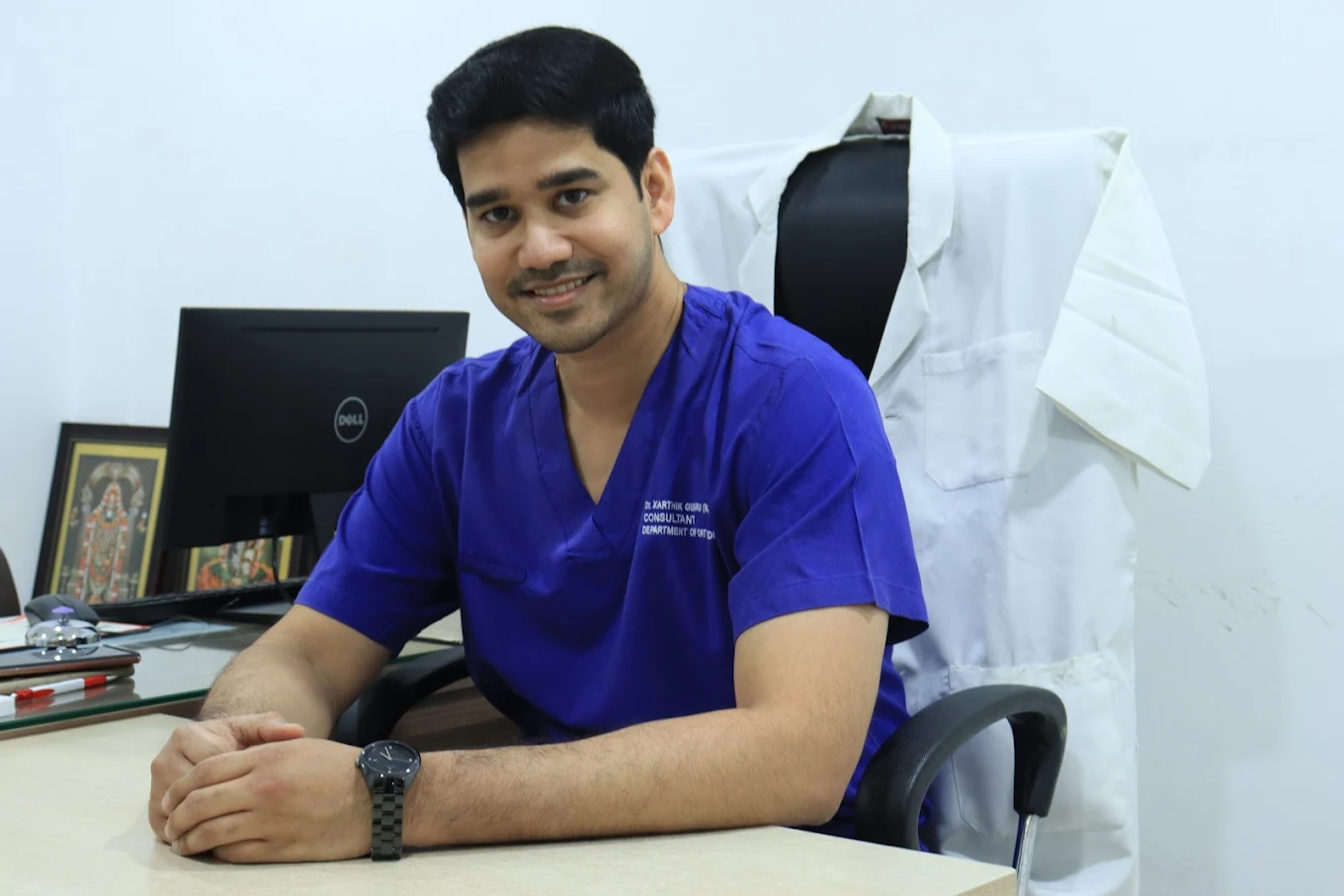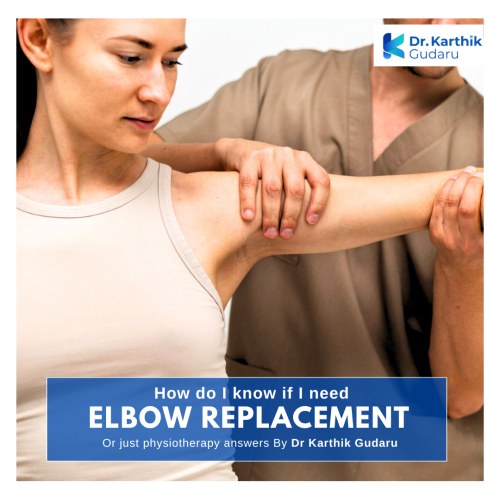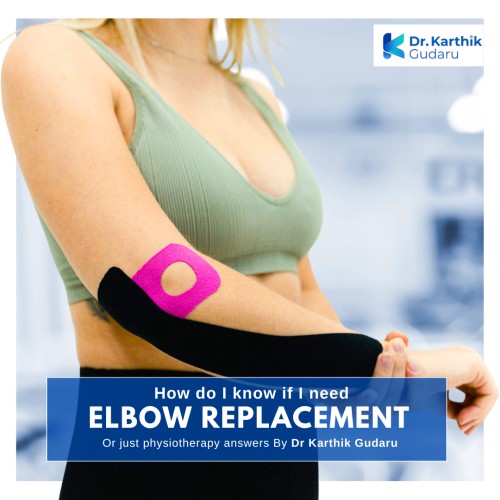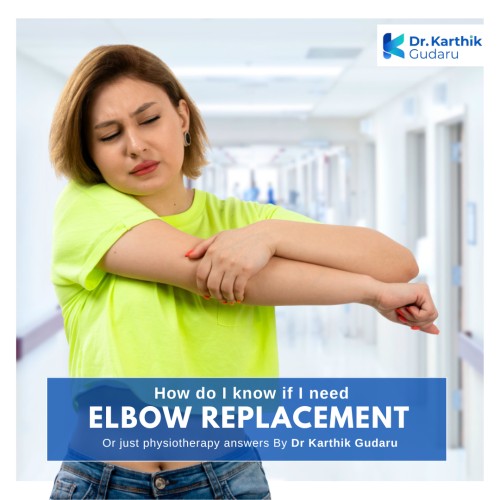Elbow pain has a way of creeping into daily life. At first, it may be a dull ache after using your arm too much, but over time, it can turn into a constant companion that makes lifting, writing, or even getting dressed a painful task. When the discomfort doesn’t go away with rest, many people wonder if physiotherapy will be enough to fix the problem or if elbow replacement surgery is the only way forward. Understanding the difference between these two approaches is the first step toward making the right decision, says Dr Karthik Gudaru, a leading orthopaedic surgeon and a specialist elbow replacement surgeon in Hyderabad, Telangana.
What does an Elbow Replacement Surgery involve?
Elbow replacement surgery, or total elbow arthroplasty, is a major procedure in which the damaged joint surfaces are replaced with artificial implants. These implants are designed to mimic the hinge-like movement of the natural elbow, helping the arm bend and straighten more smoothly. Surgery is not offered casually. It is usually reserved for people who have advanced arthritis, severe fractures that cannot be fixed with plates or screws, or long-term joint damage that makes normal activities impossible.
The goal of surgery is simple: to remove constant pain and restore as much movement as possible. Patients who undergo elbow replacement often do so after years of trying other treatments without relief. For them, surgery can mean the difference between living in pain and regaining the ability to perform everyday tasks comfortably.
What is the Role of Physiotherapy?
Physiotherapy takes a very different approach. Instead of replacing the joint, it works with the one you already have. A physiotherapist uses targeted exercises, stretches, and supportive therapies to strengthen the surrounding muscles, reduce stiffness, and improve joint mobility. Heat, cold packs, and other physical modalities may also be used to control pain and speed up recovery.
Physiotherapy is often the first line of treatment for elbow pain caused by mild arthritis, overuse injuries, stiffness after a fracture, or tendon problems. Because it is non-invasive and carries virtually no risk, it is almost always recommended before considering surgery. For many patients, a consistent program of therapy makes such a difference that they never need to think about an operation.
When is Physiotherapy Enough?
Physiotherapy is usually sufficient when the pain is mild to moderate and still allows you to carry out most daily activities. If you can move your elbow, even with some stiffness, therapy can help restore flexibility and reduce discomfort. It is also highly effective if your pain is related to muscle weakness, post-injury stiffness, or early stages of arthritis.
The key factor is response. If you notice that exercises, stretching, or supportive treatments reduce your symptoms over time, it’s a sign that physiotherapy is addressing the root of the problem. In these situations, there is no need to consider surgery, as the non-surgical path is already helping you regain function.
When Elbow Surgery Becomes Necessary?
Surgery is considered when pain and stiffness no longer respond to therapy, medication, or injections. If your elbow hurts constantly, even at rest or during the night, and makes it difficult to eat, dress, or perform routine tasks, it may be a sign that the joint is too damaged for physiotherapy alone to be effective.
Another deciding factor is mobility. If the elbow becomes so stiff that bending or straightening is almost impossible, or if the joint is visibly deformed, physiotherapy can do little to reverse the structural damage. In such cases, replacement surgery may be the only option to restore meaningful use of the arm. Advanced arthritis, complex fractures, and repeated injuries that leave the joint unstable are the most common conditions where surgery provides better outcomes than therapy.
The Doctor’s Perspective
Orthopaedic specialists rarely suggest surgery as the first solution. Most encourage patients to commit to physiotherapy first, because it is safer, less expensive, and often very effective. But doctors also recognise when therapy has reached its limit. If scans show severe joint damage and the patient’s quality of life is poor despite months of conservative treatment, surgery is usually recommended.
Even then, physiotherapy does not disappear from the picture. After elbow replacement, therapy is essential for rehabilitation. It helps patients adapt to the artificial joint, regain strength, and return to daily activities as smoothly as possible.
Making the Right Choice
If you are struggling with elbow pain and trying to decide what comes next, start with a proper medical assessment. An orthopaedic specialist can evaluate your joint through examination and imaging tests. In most cases, the advice will be to begin physiotherapy and see how your body responds. Only if the pain remains severe, mobility becomes restricted, or the joint shows advanced damage will surgery enter the discussion.
The choice between elbow replacement and physiotherapy depends largely on the severity of your condition and how well you respond to non-surgical care. Physiotherapy is usually enough for mild to moderate cases, where pain is manageable and movement is still possible. Surgery becomes necessary when pain is constant, daily life is disrupted, and the joint is too damaged for therapy to help.
In other words, if you are still able to move your elbow and find some relief through therapy, stick with it. But if your pain is relentless, your range of motion is disappearing, and simple tasks feel impossible, it may be time to discuss elbow replacement with your doctor. Both options share the same ultimate goal—to give you back the freedom to move without pain—but the right choice depends on your unique situation.

Dr. Karthik Gudaru has successfully performed a wide range of advanced orthopedic surgeries, including Total Knee Replacements, Hip and Shoulder Replacements, Elbow Joint Surgeries, and complex pediatric orthopedic procedures. He has a special expertise in robotic and computer-assisted surgeries, sports injury management, and regenerative orthopedics. His key areas of specialization include Robotic Knee Replacement, Shoulder Arthroscopy, Revision Hip Surgery, Spine Surgery, PRP & Stem Cell Therapy, and pediatric conditions like cerebral palsy, congenital deformities, and polio sequelae.


